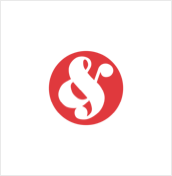- Kaija Saariaho
Lichtbogen (1986)
- Edition Wilhelm Hansen Helsinki (World)
Commissioned by the French Ministry of Culture
- 1(pic,afl)0.0.0/0.0.0.0/perc/hp.pf/str(1.1.1.1.1)/electronics (see below for details)
- 17 min
- 12th April 2025, Taube Atrium Theater, San Francisco, CA, United States of America
Programme Note
For full information on the electronics, please see 'more info'.
The name LICHTBOGEN stems from Northern Lights which I saw in the Arctic sky when starting to work with this piece. When looking at the movements of these immense, silent lights which run over the black sky, first ideas concerning the form and language for the piece started to move in my mind. What is the dependence - and does it exist at all? - between this phenomenon of nature and my piece, I don't know.
In LICHTBOGEN I work for the first time with computer in the context of purely instrumental music. Special harmony and rhythm are worked out with two different tools in IRCAM.
For harmony I have worked with the CRIME system developed by Claudy Malherbe and Gerard Assayag: the harmonic material is created by analysing short transitions played with a violoncello, starting from artificial harmonic sound and ending to complex 'multiphonic' sounds. The analyses have been made by selecting many small windows in the different parts of the sound. From the results of the analyses I have reconstructed the transitions and made harmonic processes, which are often combined to the original playing manners of the analysed sound, so that harmony and timbral thinking stem from the same source.
For the rhythm I use a network for programmes which I have realised with Xavier Rodet in the FORMES environment. These programmes allowed me to construct interpolations and transitions for different musical parameters. The rhythmic interpolations here are created between different musical patterns by using circular lists, in which every time when repeated, values have changed, and thus modified the general character of the pattern. The calculated results have then been transcribed with approximations, which allows them to be playable to musical notation.
LICHTBOGEN is a commission of the French Ministry of Culture and is dedicated to Paul Mefano.
Kaija Saariaho
The name LICHTBOGEN stems from Northern Lights which I saw in the Arctic sky when starting to work with this piece. When looking at the movements of these immense, silent lights which run over the black sky, first ideas concerning the form and language for the piece started to move in my mind. What is the dependence - and does it exist at all? - between this phenomenon of nature and my piece, I don't know.
In LICHTBOGEN I work for the first time with computer in the context of purely instrumental music. Special harmony and rhythm are worked out with two different tools in IRCAM.
For harmony I have worked with the CRIME system developed by Claudy Malherbe and Gerard Assayag: the harmonic material is created by analysing short transitions played with a violoncello, starting from artificial harmonic sound and ending to complex 'multiphonic' sounds. The analyses have been made by selecting many small windows in the different parts of the sound. From the results of the analyses I have reconstructed the transitions and made harmonic processes, which are often combined to the original playing manners of the analysed sound, so that harmony and timbral thinking stem from the same source.
For the rhythm I use a network for programmes which I have realised with Xavier Rodet in the FORMES environment. These programmes allowed me to construct interpolations and transitions for different musical parameters. The rhythmic interpolations here are created between different musical patterns by using circular lists, in which every time when repeated, values have changed, and thus modified the general character of the pattern. The calculated results have then been transcribed with approximations, which allows them to be playable to musical notation.
LICHTBOGEN is a commission of the French Ministry of Culture and is dedicated to Paul Mefano.
Kaija Saariaho
Media
Saariaho : Lichtbogen for Nine Musicians and Live Electronics
Scores
Features

- Kaija Saariaho’s Poetic Montages
- From the very beginning of her career as a composer, Kaija Saariaho has turned to poetry as a material and inspiration for her music. The forms and logics of poetry have played a defining role in her output since then.

 Located in the UK
Located in the UK
 Located in the USA
Located in the USA
 Located in Europe
Located in Europe
